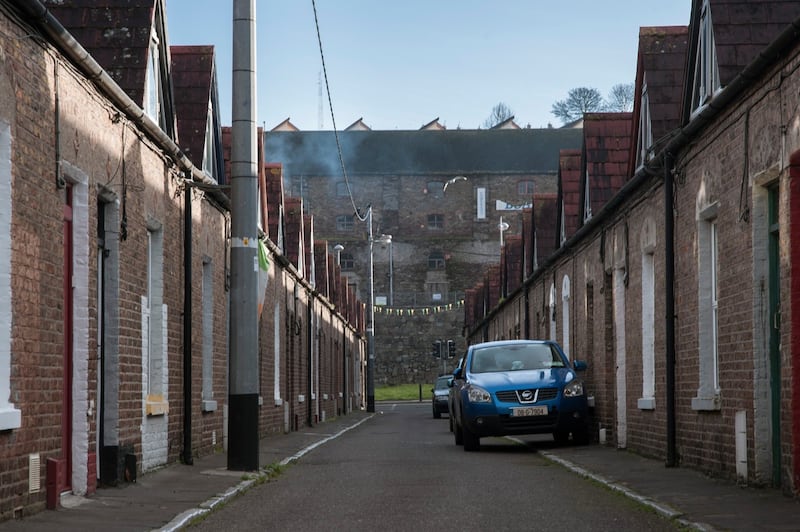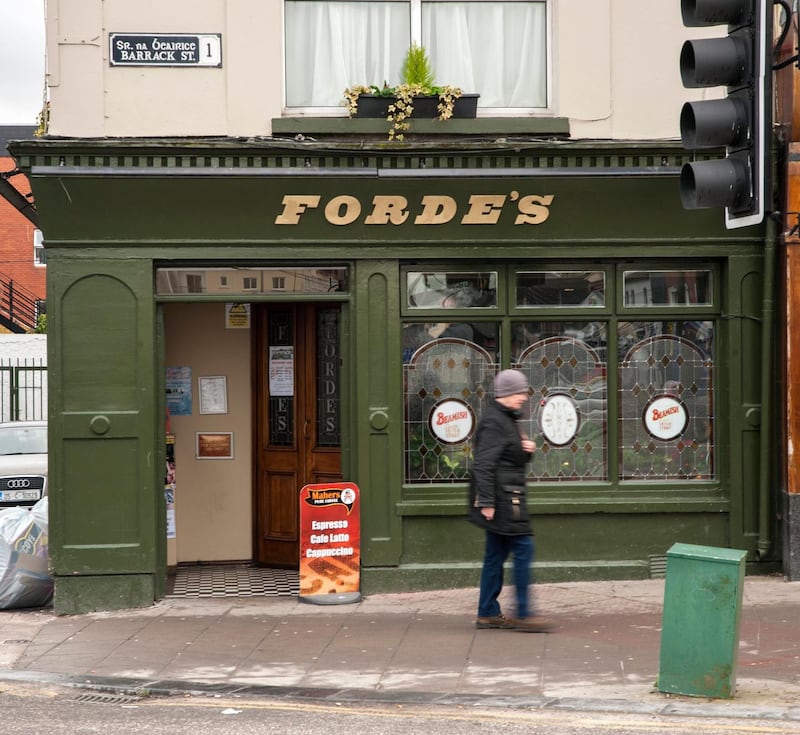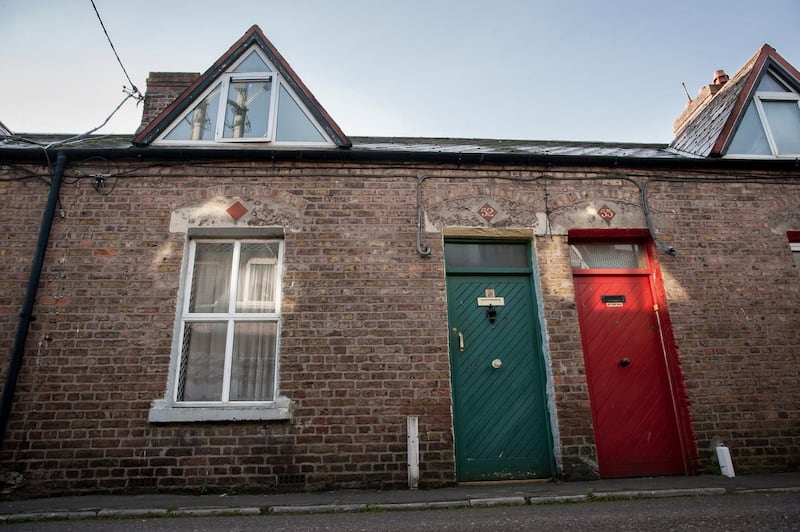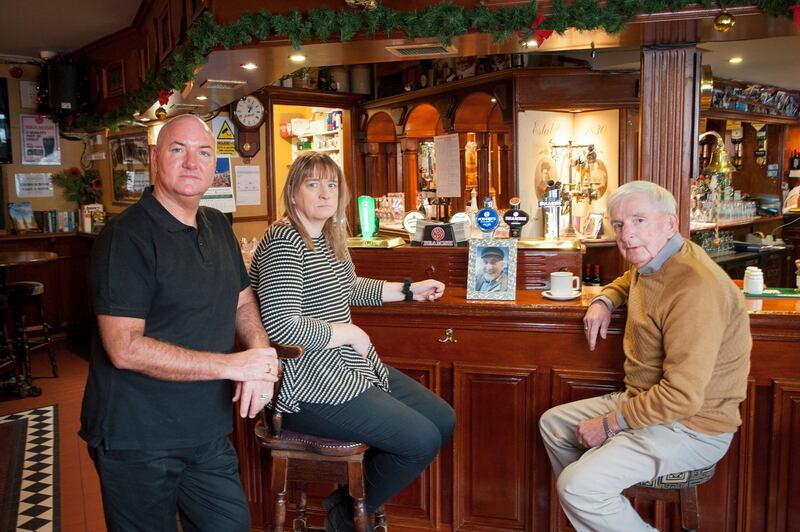In October this year, Philip Comyn, Cork city coroner, conducted two inquests within a week of each other. Both were into the deaths of older men who had died alone in their Cork city homes and laid there undiscovered for months.
Ritchie Scanlan was 85, and had been dead for more than six months at his home in Madden's Buildings in Blackpool. George Harrington was 79 meanwhile, and laid dead for six months, at his home in Immal Court, The Glen.
I find it troubling that this poor man living alone could have slipped through the cracks and be dead for over six months without anyone noticing
At Scanlan’s inquest, Comyn said: “I find it troubling that in these days of mass communication and social media this poor man living alone could have slipped through the cracks and be dead for over six months without anyone noticing.”
It is disturbing to know that Ritchie Scanlan lay dead in his home for months. But it is not in fact true that nobody had noticed the disappearance of the smiling man who ritually wore a flat cap, liked to place small bets on horses, drank Beamish, regularly bought tripe and drisheen at the English Market, and had a working mobile phone.
There is a more complicated story behind the long period of Scanlan dying at home, and being found only months later by his sister and nephew. It’s a story that presents us all with a difficult, almost impossible challenge: how to navigate the uncertain and undefined boundary between being a thoughtful and proactive friend and neighbour to an older person, and being accused of unwanted interference in a private life.

“He always sat there, and the hat was always on,” Barry O’Callaghan, a barman, says, indicating a high stool on the left of the curved counter at Forde’s Bar, on Barrack Street.
Forde’s is a calm, old-fashioned bar in central Cork, where an open fire is still lit every winter day and where the friendly, engaged barmen take the time to talk to you. There’s a vintage poster promoting an appearance by Jimmy O’Dea at Cork Opera House, and a notice for the upcoming Christmas draw, the prizes for which include a tin of biscuits and a turkey voucher for €30.
“His laugh would fill the place; a big hearty laugh. He’d brighten up your day,” O’Callaghan says. “He looked a bit like Captain Birdseye, from that ad.”
Brian Crean is the other barman at Forde’s. Barry and Brian build up a portrait of their late customer, who had been coming to the bar three or four times a week for more than 20 years.
“He’d take the 203 bus from Blackpool to Patrick Street, and stop off at Ladbrokes on Drawbridge Street to make a bet before coming on here. Sometimes he’d stop off in the English Market and buy tripe and drisheen. He’d have the bag hanging off the counter, and it’d be dripping on to the floor. He didn’t want Meals on Wheels. He liked to cook for himself. He was very independent.”
“It was always mornings he was here. He’d arrive in between about 10.45 and 11am and then leave about 2pm. He never came at night. Or on Sundays. ‘Never drink on the Sabbath,’ he’d say.”
He'd have a couple of pints, and sometimes a plate of chips. He'd have the chips drowned in vinegar. Sometimes he'd buy a bag of Taytos and stuff it down into his pocket and eat them one at a time
“A pint of Beamish was what he drank. He’d have a couple of pints, and sometimes a plate of chips. He’d have the chips drowned in vinegar. Sometimes he’d buy a bag of Taytos and stuff it down into his pocket and eat them one at a time.”
“He’d give me his dockets and ask me to check the racing results.”
“He’d always be ball-hopping [joking] with some of the regulars.”
“He had worked down the docks back in the day; loading and unloading, that kind of stuff.”
“His geography was very bad. I told him I was going to Tenerife on holidays, and he asked me if that was in Germany.”
“He had a small phone, but no one knew his number.”
“In recent years, he used to get a cab home. He had trouble with his legs. We’d help him take the bag of messages out to the cab.”
“I’d say he didn’t go out again for the day once he got home.”
“He had lots of friends here. They’ll be coming in for lunch soon.”
“Look, this is him,” O’Callaghan says, reaching to a shelf behind the counter and taking down a framed photograph.

This blurry photograph, of a smiling man in a peaked cap, isn’t the clearest of images. But it’s the only picture the people who manage and frequent Forde’s bar have of their long-time late customer and friend, and they treasure it.
“We put it up because he was such a nice character in the pub. We wanted to have the opportunity to talk about him, and to remember him,” O’Callaghan says, before carefully replacing the photograph to its prominent place on the shelf behind him.
These barmen know their customers, and their routines. Just as O’Callaghan had predicted, Ritchie Scanlan’s old friends come into the pub around lunchtime. One of them is Elaine O’Sullivan. It’s she who took the photograph of Scanlan, on her phone. After hearing of his death, she got the image printed, bought a frame, and brought the photograph to the bar.
I heard on the news that someone had been found dead, and then I heard in here that it was Ritchie. I was in shock. Very, very upset. It was horrible. Just horrible
“I heard on the news that someone had been found dead, and then I heard in here that it was Ritchie,” she says. “I was in shock. Very, very upset. It was horrible. Just horrible.” O’Sullivan blinks back tears as she searches through her phone to locate the photograph. “I was messing around one day, taking selfies, and I showed Ritchie how to do it; then I took the picture of him.”
The photograph is from about three years ago. The two were friends for the 10 years O’Sullivan had been coming to the bar, and always sat beside each other at the counter. “He had an old Nokia phone, a pay-as-you-go. I used to put credit on it for him. He’d have the piece of paper, and I’d put in the numbers for him. I helped him pay bills.”
Tony Keane is another of Scanlan’s former friends. “I knew him since all the time he was drinking here,” he says. “I used to help him do his messages next door. He always had the same Dunnes Stores bag with him.” Keane recalls what Scanlan used to buy. “Tea – Barry’s Tea, of course – butter, sausages, bacon, bread, eggs.”
Keane knew that Scanlan never drew his pension on a Friday, the day it is first available. “He didn’t like the queues, so he always waited till Saturday to collect it.”

The last time Ritchie Scanlan went to Forde’s pub was December 22nd, 2018. Another nephew, Denis Cronin, who lives in Dublin and gave evidence at the inquest, stated that he last saw his uncle alive that Christmas Eve. He also said that the family had unsuccessfully tried to persuade Scanlan to accept Meals on Wheels, and that he had refused to allow a public-health nurse to call on him.
During the inquest the coroner said he found it surprising that nobody had noticed Scanlan’s absence from the pub or the bookmaker’s.
But Richie Scanlan was missed almost at once in January of this year in Forde’s, both by staff and by customers. “He had had such a routine that we were constantly asking each other where he was,” Barry O’Callaghan says.
“He was always here a few days a week between 10.30am and 11am, and when he stopped coming we noticed,” Tony Keane says. “We thought there was something wrong.”
Twice in January, O’Callaghan and Keane went to Scanlan’s home, at 52 Madden’s Buildings, and knocked on the door. Nobody answered. Keane also knocked on neighbours’ doors, asking if they had seen Scanlan, and got various responses. Some were sure they had seen him lately; others weren’t so sure. O’Callaghan and Keane also contacted staff at Blackpool Cabs, which Scanlan had used, and were told that he had been seen around locally in January.
His legs had been giving him trouble. I thought maybe he wasn't able to get out as much as he had been, and was staying local
They were left with a vague impression that Scanlan was maybe resting up for a while, but they were still worried about why he hadn’t appeared in Forde’s since Christmas. “His legs had been giving him trouble,” Keane says. “I thought maybe he wasn’t able to get out as much as he had been, and was staying local.”
“What I don’t understand is, why did nobody at the post office not realise he wasn’t collecting his pension any more?” Elaine O’Sullivan says. “He had been collecting it every week for years.”
At Ladbrokes on Drawbridge Street, Clive Kiely is behind the counter. I show him the blurry photograph of Ritchie Scanlan and ask if he recognises who it is, as apparently this man was a former regular customer.
“Yes,” he says, right away. “I know him. He’d be first in the door in the mornings, about 10.30am, making small bets on the horses. Yankee bets, we call them. I remember the hat.”
Kiely is shocked when he hears of Scanlan’s death. “I had heard about it on the news, but there was no photograph, so this is the first time I’ve realised it was him. He was a regular customer. But we only ever spoke very briefly. I wouldn’t have known anything about him.”

Madden’s Buildings consist of a double row of stone cottages built in 1886, on the site of a former cattle market. I knock on doors in the row where his cottage is located; doors with letter boxes placed unusually high, at shoulder height. I work my way up one side and down the other. About a quarter of the doors I knock on are cautiously opened. I ask everyone who answers about their former neighbour.
“He was a lovely quiet man who minded his own business.”
“I’d see him going for the bus in the mornings. He used to lean on the wall to support himself when he was walking. He was slow on his legs right enough.”
“He’d pass by my window in the mornings, and go round the corner to the Daybreak shop to get the bus from there, because it’s shorter to walk to that stop than the other one.”
“I’d see him getting out of a taxi in the afternoon with shopping.”
“I didn’t see him for a while but thought he was keeping his distance.”
“It was only when we saw the guards turn up that we realised something was wrong.”
His body was lying on the floor, in front of a plug-in electric heater, which was still on. The dead man was wearing one shoe, black leggings, a green T-shirt, a check shirt and a cardigan. There was €160 in one of his pockets
At 11.30am on July 19th this year, Scanlan’s sister and nephew arrived at his house. They had a key and, after knocking to no reply, let themselves in and discovered the body. It was lying on the floor, in front of a plug-in electric heater, which was still on. The dead man was wearing one shoe, black leggings, a green T-shirt, a check shirt and a cardigan. There was €160 in notes and some loose change in one of his pockets.
In his inquest deposition, Joe O’Mahony stated: “I immediately rang the emergency services.” An ambulance arrived, and then the Garda was called.
Eric Stafford, of Watercourse Road Garda station, who was in a patrol car in the area, arrived at Madden’s Buildings at 12.29pm. In his statement, he said: “The house was secure. There was no sign of forced entry, the electric heater and oven were still on. Richard Scanlan was cold to the touch.”
At 1pm he was pronounced dead at the scene by a local doctor, and his body removed to the morgue at Cork University Hospital. The autopsy was carried out three days later.
Dr Margaret Bolster, who conducted the postmortem, noted his body was in an advanced state of decomposition.
The cause of Ritchie Scanlan’s death was recorded as unascertained, because of the length of time the body had been undiscovered.

Brenda Barry is co-ordinator of the Cork Friendly Call service, which was set up in 2011. Its volunteers telephone about 210 older people in the city every weekday. Their clients come to them through contact with community gardaí, public-health nurses and word of mouth.
“The calls can last a minute or go to 40 minutes,” she says. “Most calls are between three to five minutes. After the two men were found, people were bringing it up in their calls; they were telling us they were dreading something like that happening to them. One lady has told us she wants to be rung every day to make sure that if she dies in the night she’ll be found soon.”
John O'Mahony is national development manager for Age Action in Cork. Their catchment area extends to about 20km from Cork city. Was he surprised to hear of two cases of older Corkonian men having lain dead, undiscovered, in their homes for months?
“I’d like to say I was, but probably not,” he says. “Although it is unusual for two to happen so close together. I have heard of other cases in recent years.”
We always encourage people to connect with services. But if people don't want to, then you have to respect their right to make that decision
One of the services Age Action offers is Care & Repair. This is a free call-out service for older people who need help with small household jobs that they can no longer do independently. They can be as simple as changing a light bulb, for a person who is unable to stand on a chair to do the task themselves. Other jobs include sweeping up leaves, fixing furniture hinges or curtain rails, and installing security chains – jobs few regular tradesmen would bother taking on.
Public-health nurses and others pass on the message to their clients about this service. “It’s often people who don’t connect with services who end up in the most difficult situations,” O’Mahony says. “We always encourage people to connect with services. But if people don’t want to, then you have to respect their right to make that decision.”
The death notice for Ritchie Scanlan was published on July 21st. It stated that he had died unexpectedly, at home, that he had been a dearly loved son and much loved brother and was sadly missed by his family and friends.
He was interred at St Finbarr’s Cemetery, in Cork city, on Wednesday, July 24th.
The Irish Times made various unsuccessful attempts to contact the family of the late Richard Scanlan.
How many over-65s live alone?
Of over-65s living alone in Ireland, 38 per cent are men and 62 per cent are women. The following regions have the highest proportions of people over 65 who live by themselves, according to the 2016 census
Leitrim 33 per cent
Dublin city 32 per cent
Cork city 30 per cent
Longford 30 per cent
Roscommon 30 per cent
Mayo 30 per cent
Sligo 30 per cent
Cavan 28 per cent
Donegal 28 per cent
Galway city 28 per cent


















